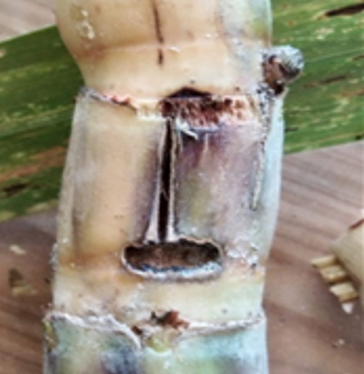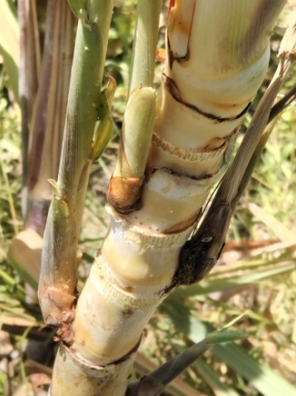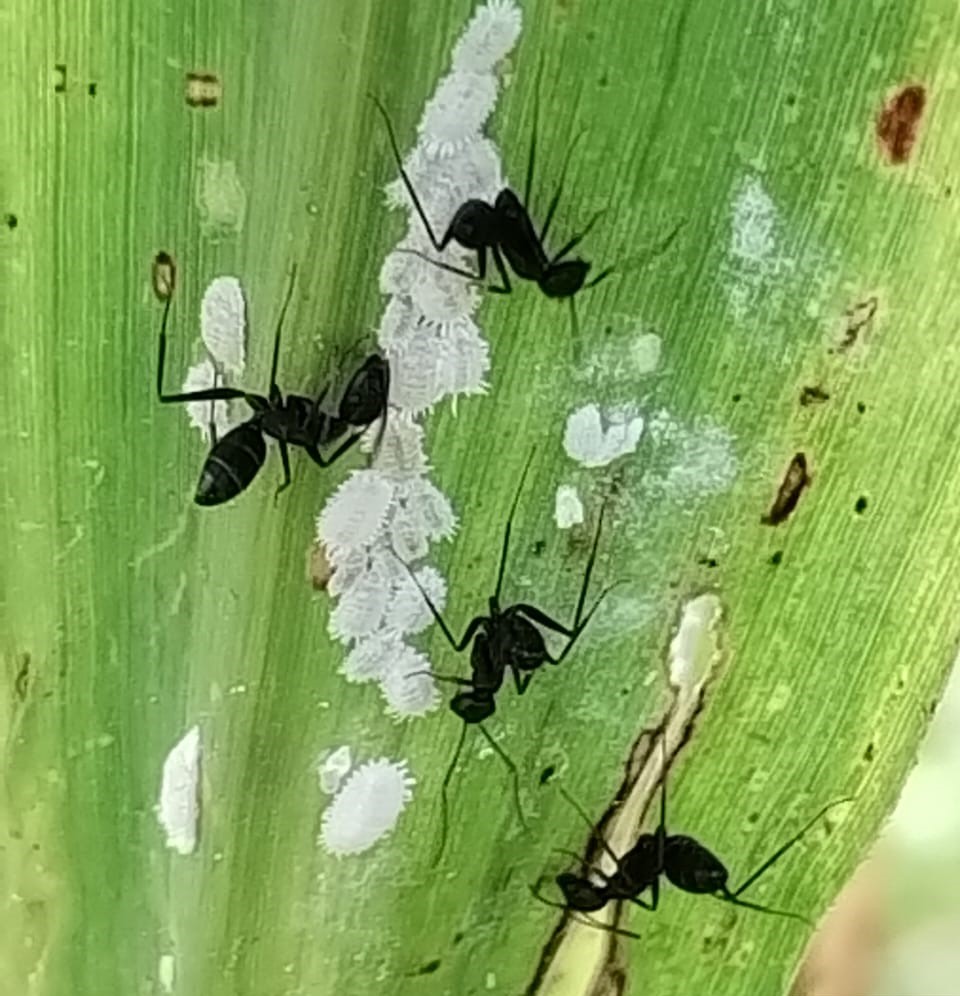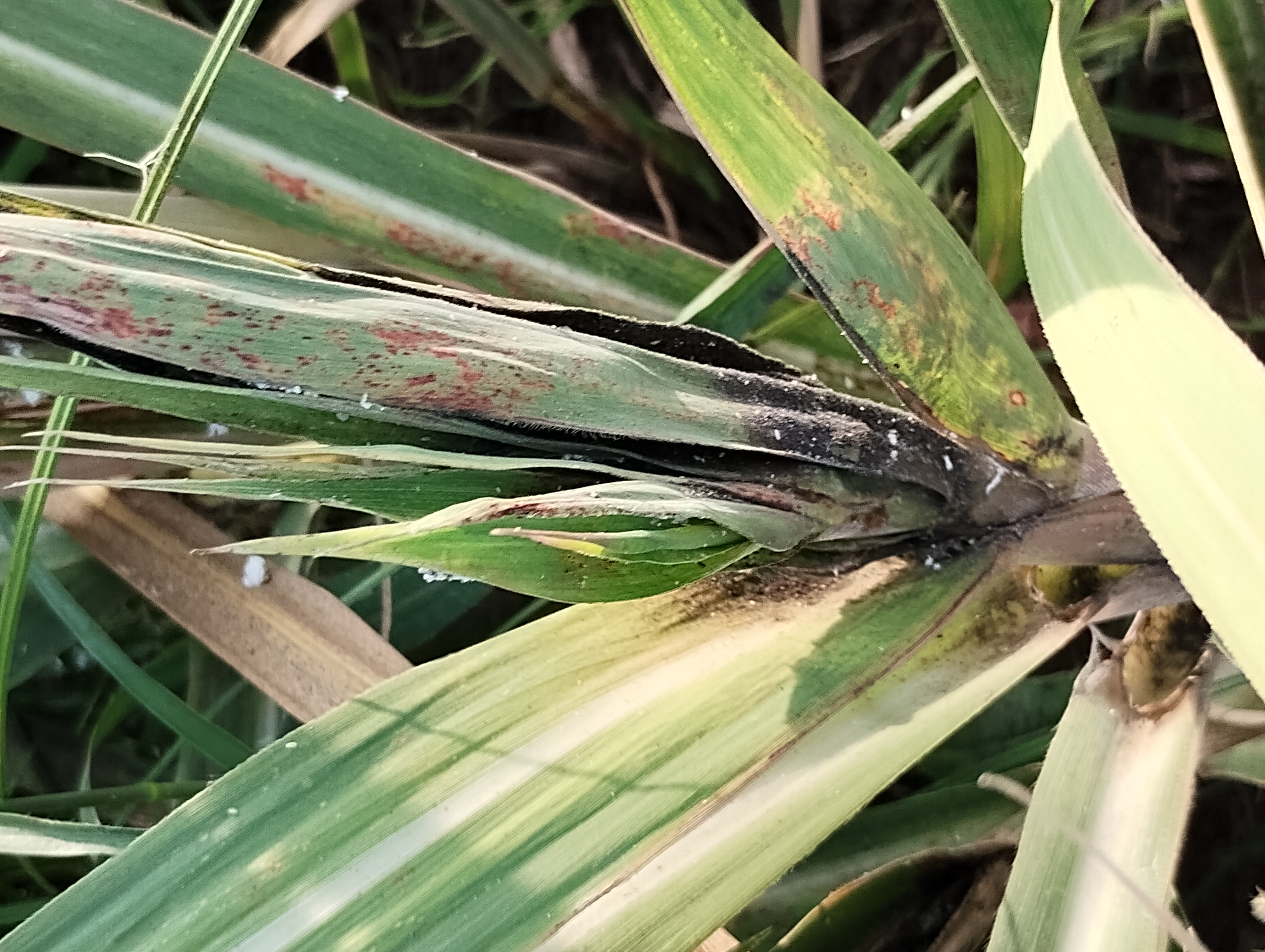Agricultural crops :: Cash crops :: Sugarcane
Pokkah boeng - disease of Sugarcane |
Pokkah boeng
- Pokkah boeng is a re- emerging disease in sugarcane.
- It is a Javanese term denoting a malformation or distorted top.
- It is caused by the Fusarium species complex.
- Severity of Pokkah boeng disease incidence increases with the occurrence of the crown mealybug Phenacoccus saccharifolii coincides with summer months of April-July.
- The mealybug P. saccharifolii colonizes the crown region of the crop and associated with black ant Camponotus compressus.
- Profuse honey dew secretion by the crown mealybugs leads to extensive sooty mould (Capnodium sp.) growth on the leaves.
- Three to seven months old plant crops are most susceptible to the disease, whereas in ratoon one month old crops itself got affected by the Pokkah boeng disease.
Symptoms:
- Chlorotic phase (chlorotic, rough, wrinkling, twisting and shortening of the leaves).
- Top rot phase (growing point is killed and the entire top of the plant dies).
- Knife cut phase (Its look like the tissues of the stem are removed with a sharp knife).
- Shortening of internodes.
- Bud sprouting (it occurs during before maturation of crop).
|
| |
 |
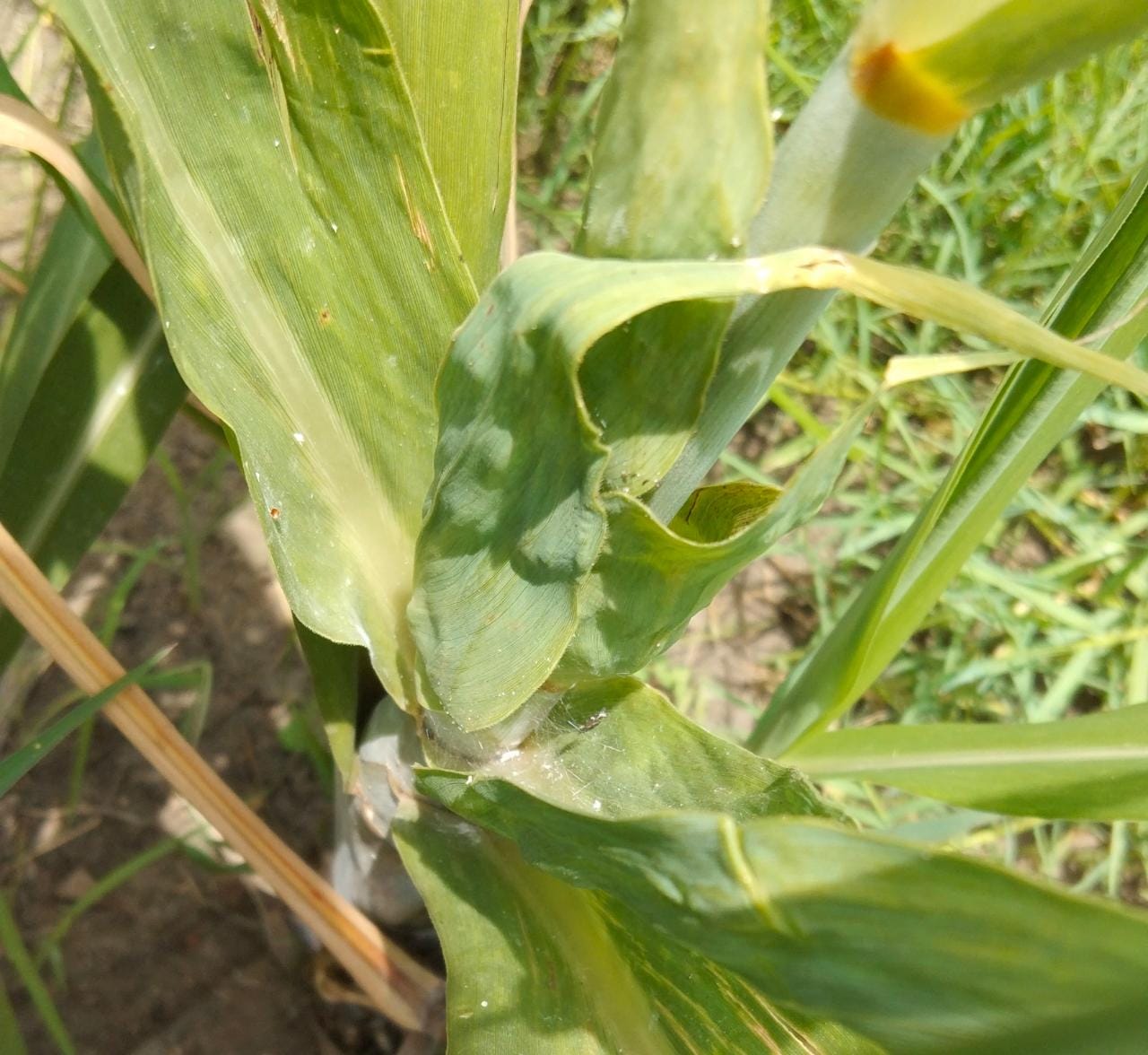 |
 - Twisting of leaves.jpg) |
 |
|
| |
Chlorotic phase |
Wrinkling, twisting and shortening of leaves |
Ratoon - Twisting of leaves |
Top rot phase |
|
|
|
Pathogen:
-
Pokkah boeng is caused by the Fusarium species complex (Fusarium sacchari, Fusarium proliferatum, Fusarium verticillioides etc.,).
Favourable conditions:
- Pokkah boeng was favoured by warm, moist condition and additionally, summer showers with cloudy weather also favour disease development
Mode of spread :
- Pokkah boeng is an air-borne disease
Primary spread : Air-current
Secondary spread : Infected setts, irrigation water, splashed rains and soil
Mode of survival :
- The pathogen (Fusarium) can survive for 12 months in the plant debris under natural conditions.
Management :
- The following Integrated pest and disease Management practices is recommended to manage the Pokkah boeng disease in sugarcane.
Cultural methods :
Use moderately tolerant variety |
: |
Co 86032 |
| Highly susceptible varieties may be avoided |
: |
CoV 09356, CoV 94101, Co 11015, Co 06022 and 87 A 298 |
Physical methods:
- Before spraying ensure detrashing.
- Monitor the movement of ants regularly.
- Removal of infected plant parts showing top rot and knife cut symptoms .
Chemical method
- Sett treatment with Propiconazole 25% EC (1ml/lit.) + Imidacloprid 70 WS (1ml/lit.) for 20 minutes as prophylactic measures (Plant crop).
- Application of recommended dose of fertilizers and micro nutrients after every ratoon and at the time of earthing up.
- Spraying of TNAU Sugarcane Booster @ 1kg, 1.5kg and 2kg at 45, 60, 75 days respectively after planting / ratooning.
- Spraying with Propiconazole 25% EC 1ml + Imidacloprid 17.8% SL 0.4 ml + sticking agent 1ml + water 1lit. soon after the appearance of symptom. If incidence noticed again, spraying with Propiconazole 25% EC (1ml/l) + Flonicamid 50 WG (0.3g/l) or Clothianidine 50 WDG (0.5g/l) @ 20 days interval.
|
Content Validators:
Dr. S. Thangeswari,
Asst.Prof. (Plant Pathology),
Department of Plant Pathology,
TNAU,
Coimbatore.
|
|



 - Twisting of leaves.jpg)

